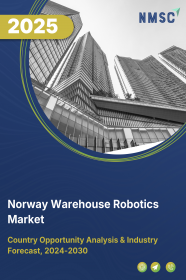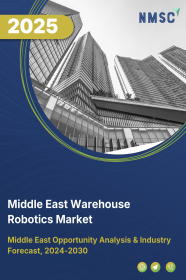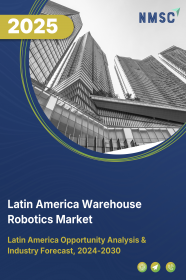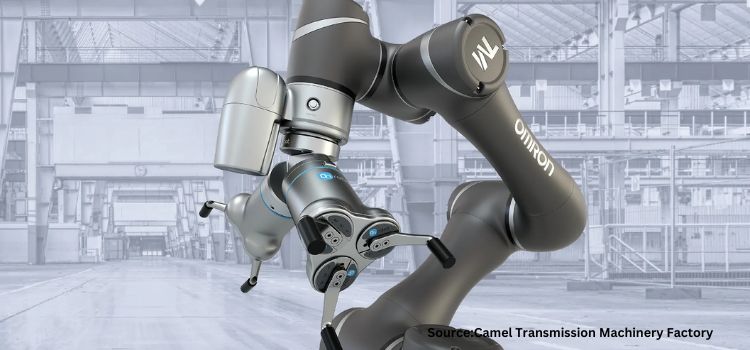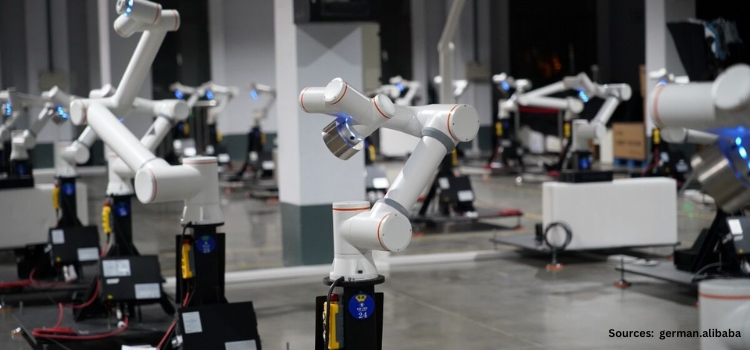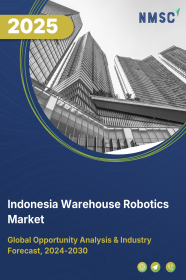
Indonesia Warehouse Robotics Market by Type (Automated Guided Vehicles (AGVs), Autonomous Mobile Robots (AMRs), Articulated Robots, & Others), by Offering (Hardware, Software, and Services), by Payload Capacity (Less than 100 KG, 101-200 KG, 201-500 KG, and Others), by Application (Palletizing and Depalletizing, Sorting and Packaging, Picking and Placing, Transportation), and by End-User (E-commerce, Automotive, Food & Beverages, Others) – Opportunity Analysis and Industry Forecast, 2025–2030
Industry: Semiconductor & Electronics | Publish Date: 28-Mar-2025 | No of Pages: 130 | No. of Tables: 96 | No. of Figures: 53 | Format: PDF | Report Code : SE3136
Indonesia Warehouse Robotics Market Overview
The Indonesia Warehouse Robotics Market size was valued at USD 127.5 million in 2024, and is predicted to reach USD 395.0 million by 2030, at a CAGR of 19.7% from 2025 to 2030.In terms of volume, the market size was 6.96 thousand units in 2024 and is projected to reach 23.13 thousand units by 2030, with a CAGR of 21.0% from 2025 to 2030
Indonesia's labor shortage is causing serious issues to firms relying on manual labor to carry out duties such as stock management, picking, packing, and sorting inside warehouses so the need for speedier and more accurate order completion is rising dramatically, particularly within the fast-paced e-commerce segment, thereby employment of robots inside warehouses and also development of the e-commerce segment act as a booster for warehouse robotics market. Nevertheless, a shortage of experts with abilities to operate and maintain complex robotic systems is the biggest obstacle for the growth of Indonesia's warehouse robotics market. On the contrary, the advent of artificial intelligence in the warehouse robotics market provides potential opportunity for the market in the future.
Indonesia Warehouse Robotics Sector Propels Due to Rising E-commerce
The rapid expansion of e-commerce websites contributes to expanding demand for effective warehousing solutions for managing increasing order volumes. Robotic technology with automation contributes significantly to increased order fulfillment, automating inventory management, and the optimization of last-mile delivery operations. Indonesia online retail industry is expected to grow from USD 52.93 billion in 2023 to USD 86.81 billion by 2028 at a compound annual growth rate of 10.4% during the forecast period, states the International Trade Administration.
Rise in Labour Costs Drives the Indonesia Warehouse Robotics Industry Growth
The rising labour costs in Indonesia compelled companies to find cost-efficient means to sustain operational effectiveness. With increasing wages because of government intervention and lack of labour, businesses are embracing warehouse robotics as a means of decreasing reliance on human labour and increasing productivity. Based on latest findings by the OECD, the Indonesian economy is posting strong GDP growth even in spite of feared growing labour costs, with an estimate of a 5.1% rise in 2024 and 5.2% in 2025. The movement toward mechanization is thus fueling demand for robotics in warehouses among Indonesia's various industries, becoming an essential determinant in the expansion of the market.
Inadequacy of Skilled Workforce Hinders the Market Expansion
Lack of skilled professionals who can work and maintain advanced robotic systems is a hindrance to the growth of the warehouse robotics market in Indonesia. As there is no talent base available to support automation businesses may remain hesitant to make investments in warehouse robots, thus limiting the aggregate adoption rate and restricting the growth potential of the market. Rectifying this challenge requires heavy investment in labor growth through vocational training programs, corporate collaborations, and government efforts in skill upgradation of workers so that they conform to the shifting demands of the logistics sector.
Introduction of Artificial Intelligence Creates Future Option for the Market
The addition of artificial intelligence in warehouse robotics is expected to play a major role allowing growth opportunity for the market in the future. AI induced solutions improves decision making, optimize inventory management and improve the accuracy and speed of operations that helps warehouses to become more accurate and adaptable. As such in January 2025, Nvidia disclosed new AI development tools aimed at improving the potential of autonomous robots and vehicles. These models are made to create synthetic data and simulate physical interactions, allowing developers to create designed templates for testing their AI systems before real-world. These progresses will focus on the transformative potential of AI in warehouse robotics, paving the way for smarter, more lively and highly efficient warehouse operations that meet the future demands of modern supply chains.
Competitive Landscape
The promising players operating in the Indonesia warehouse robotics market includes ABB Ltd., Omron Corporation, KUKA AG, Fanuc Corporation, JBT Corporation, Zebra Technologies, Dematic, Honeywell International Inc, Daifuku Co., Ltd., YASKAWA ELECTRIC CORPORATION, Toshiba Corporation, SSI Schaefer and others.
Indonesia Warehouse Robotics Market Key Segments
By Type
-
AGVs
-
AMRs
-
Articulated Robots
-
Others
By Offering
-
Hardware
-
Software
-
Services
By Payload capacity
-
Less than 100 kg
-
101-200 KG
-
201-500 KG
-
Others
By Application
-
Palletizing and Depalletizing
-
Sorting and Packaging
-
Picking and Placing
-
Transportation
By End User
-
E-commerce
-
Automotive
-
Food & Beverages
-
Others
KEY PLAYERS
-
ABB Ltd.
-
Omron Corporation
-
KUKA AG
-
Fanuc Corporation
-
JBT Corporation
-
Zebra Technologies
-
Dematic
-
Honeywell International Inc
-
Daifuku Co., Ltd.
-
YASKAWA ELECTRIC CORPORATION
-
Toshiba Corporation
-
SSI Schaefer
REPORT SCOPE AND SEGMENTATION:
|
Parameters |
Details |
|
Market Size Value in 2024 |
USD 127.5 million |
|
Revenue Forecast in 2030 |
USD 395.0 million |
|
Value Growth Rate |
CAGR of 19.7% from 2024 to 2030 |
|
Market Volume in 2024 |
6.96 thousand units |
|
Unit Forecast in 2030 |
23.13 thousand units |
|
Volume Growth Rate |
CAGR of 21.0% from 2025 to 2030 |
|
Analysis Period |
2024–2030 |
|
Base Year Considered |
2024 |
|
Forecast Period |
2025–2030 |
|
Market Size Estimation |
Million (USD) |
|
Market Volume Estimation |
Thousand units |
|
Growth Factors |
|
|
Companies Profiled |
12 |
|
Market Share |
Available for 10 companies |
|
Customization Scope |
Free customization (equivalent up to 80 working hours of analysts) after purchase. Addition or alteration to country, regional, and segment scope. |
|
Pricing and Purchase Options |
Avail customized purchase options to meet your exact research needs. |







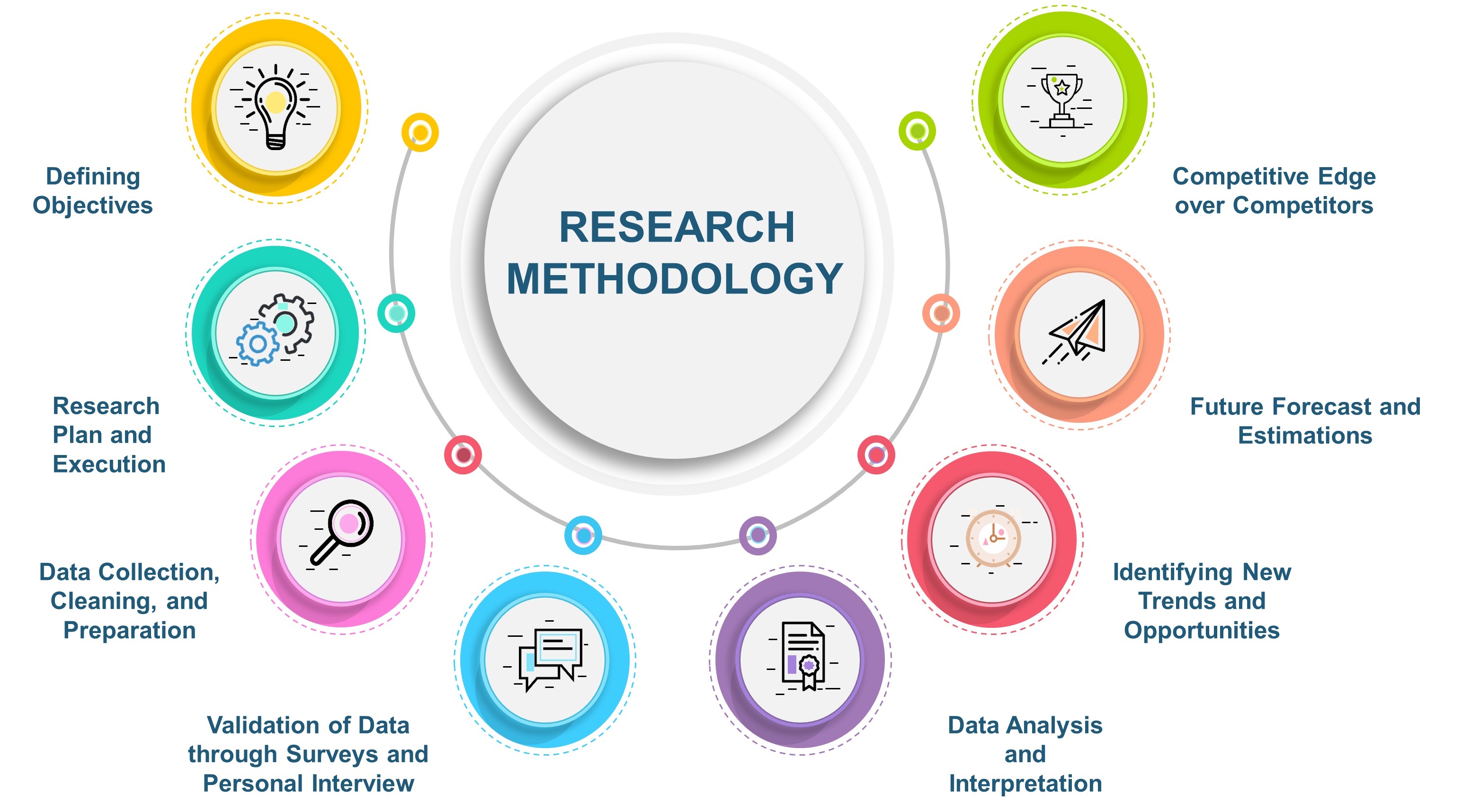
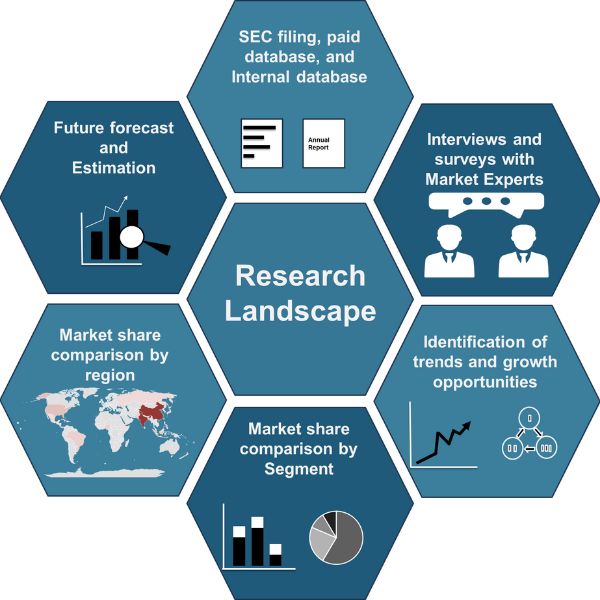





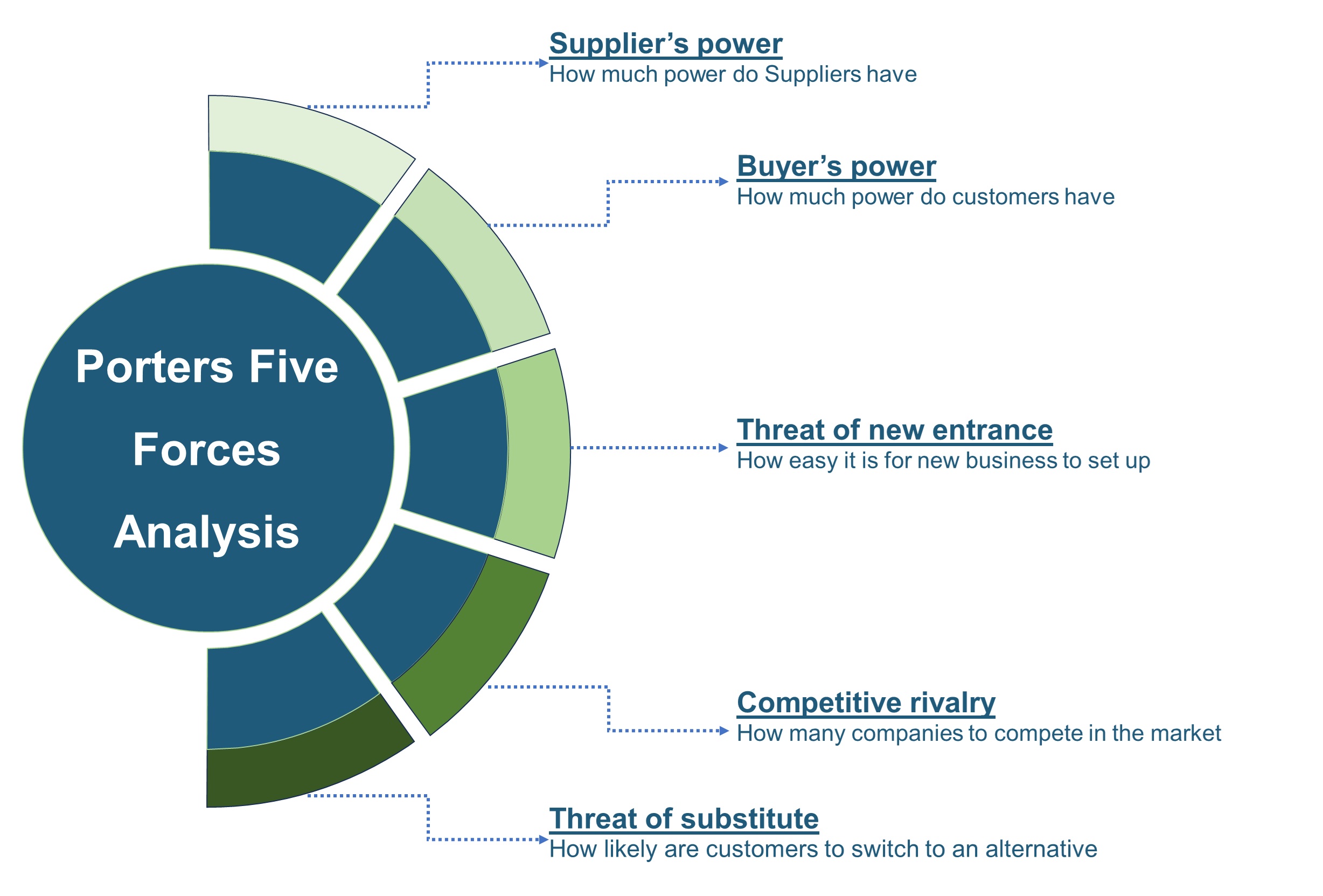

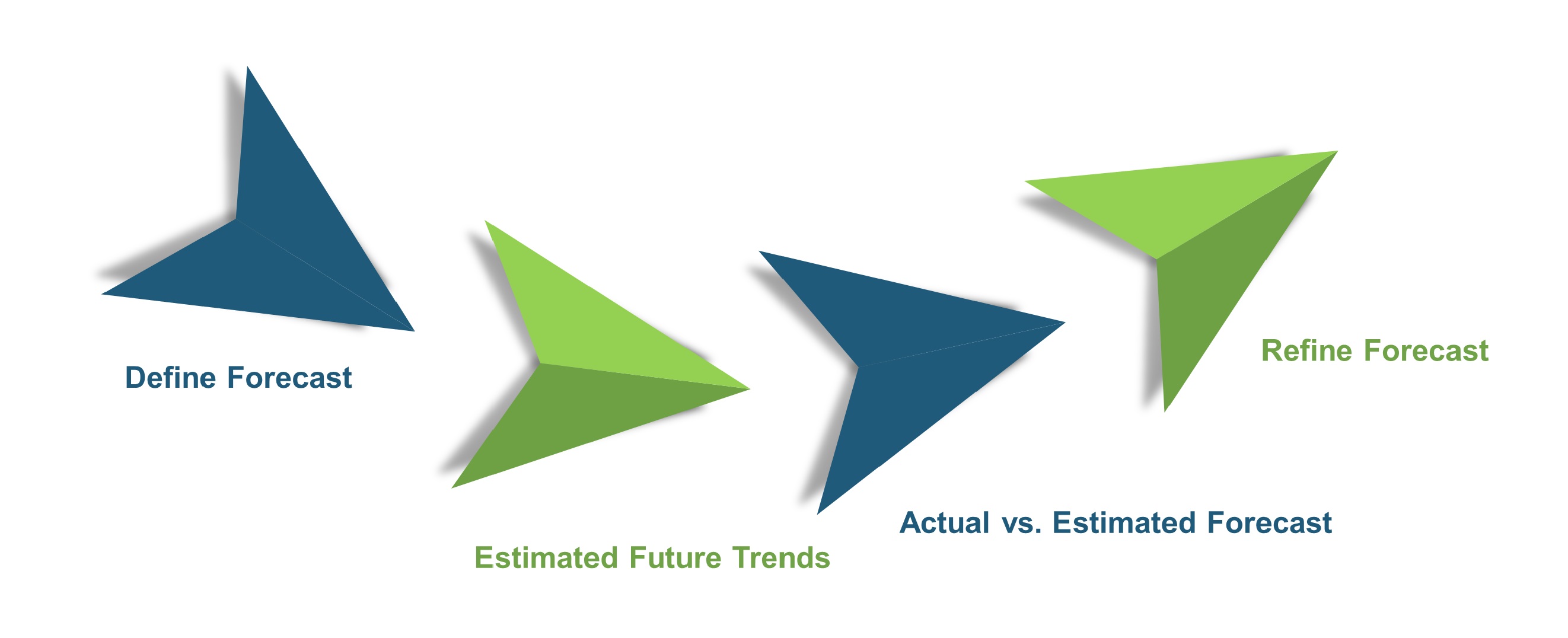
 Speak to Our Analyst
Speak to Our Analyst



